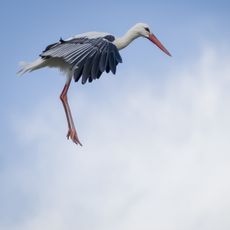The Queen presented with new Kew rose
A new rose is to be presented to The Queen to mark the 250th anniversary of Kew Gardens

As the Royal Botanic Gardens at Kew celebrate 250 years, The Queen is to make a special visit. She will be given a new variety of rose in order to mark the occasion.
Her Majesty made her first official visit to the gardens aged 33, to mark the 200th anniversary in 1959. As an enthusiastic gardener the Queen has since visited Kew Gardens and Palace at least six times, most notably to mark her 80th birthday on April 21st 2006, with other members of the Royal family.
Director of the Botanic Gardens, Stephen Hopper remarked that the anniversary will be ‘a unique chance to share Kew’s remarkable heritage and the important contribution that we are making to plant conservation.’
The gardens were founded in 1759 by Princess Augusta, the mother of King George III, on a nine-acre estate surrounding Kew Palace. It was not however until the reign of Queen Victoria that the gardens were opened up to the public. In 1869 popularity was bolstered by the arrival of the railway, allowing many more to appreciate the beauty of the site.
Kew has not always basked in Royal glory; at one stage ‘the Queen’s Garden’, situated behind the palace was regularly flooded by the River Thames, and as a result left largely uncultivated. In 1959 it then underwent something of a Renaissance under the director at the time, Sir George Taylor, who aimed to raise the standard and style to match that of the palace. The resulting work took six years to complete, and was finished in 1969, when the revamped ‘Queen’s Garden’ was officially opened by her Majesty.
To recognise the unwavering support given by The Queen to the development of the gardens, her Majesty will next week be presented with a thornless rose, named ‘the Kew Gardens’. The plant is a white-flowered English musk hybrid; it has been specially bred for the occasion, and is one of the few to be entirely without thorns.
Other activities due to be undertaken as part of the Royal visit next week include the unveiling of an anniversary plaque, and the planting of two trees. The Queen will plant a Ginkgo, known as a ‘living fossil’ - an ancient tree, which is now only native to a small area in central China. The Duke of Edinburgh will plant a Wollemi pine – a species thought to be extinct until it was rediscovered in 1994 in Australia. The Wollemi pine is now part of an international conservation programme.
Sign up for the Country Life Newsletter
Exquisite houses, the beauty of Nature, and how to get the most from your life, straight to your inbox.
Director Stephen Hopper said that he will be very much looking forward to greeting her Majesty as ‘the gardens will be looking spectacular, there has been no better time to visit.’ One royal aide confirmed The Queen's fondness for Kew: ‘The gardens have a rich history and are very much a part of royal life.’
Kew Gardens is a UNESCO World Heritage site and a global leader in scientific research and international conservation.
To comment on this article, use the comment box below, or email us at clonews@ipcmedia.com. Read more about the countryside.
Country Life is unlike any other magazine: the only glossy weekly on the newsstand and the only magazine that has been guest-edited by HRH The King not once, but twice. It is a celebration of modern rural life and all its diverse joys and pleasures — that was first published in Queen Victoria's Diamond Jubilee year. Our eclectic mixture of witty and informative content — from the most up-to-date property news and commentary and a coveted glimpse inside some of the UK's best houses and gardens, to gardening, the arts and interior design, written by experts in their field — still cannot be found in print or online, anywhere else.
-
 A well-connected rural playground with 23 acres on the edge of the South Downs National Park
A well-connected rural playground with 23 acres on the edge of the South Downs National ParkOld House Farm is an impressive family home with a wealth of amenities that would inspire any rural passion.
By Arabella Youens Published
-
 The UK gets its first ‘European stork village’ — and it's in West Sussex
The UK gets its first ‘European stork village’ — and it's in West SussexAlthough the mortality rate among white storks can be up to 90%, the future looks rosy for breeding pairs in southern England.
By Rosie Paterson Published
